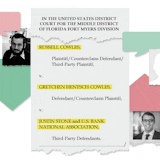The assumption among criminals, said Ramsey County Sheriff Bob Fletcher, is that they're not being watched.
That won't be the case anymore in a number of public areas of the county, such as parking lots for county parks, libraries and ice arenas, or in high-crime public areas. The county is installing a $40,000 network of surveillance cameras, which transmit to a set of viewing monitors that will be watched by community service officers, and trained and screened volunteers.
Fletcher says the surveillance system "has the potential to revolutionize public safety." However, Chuck Samuelson, executive director of the Minnesota Civil Liberties Union, wonders whether the benefit will be worth a loss of privacy to citizens.
The cities of Minneapolis and St. Paul and any number of private entities also make use of video surveillance.
Ramsey County's first eight cameras have been running for two weeks. Eventually, video streams from 30 cameras posted all over the county will be accessible from deputies' cars and cell phones, the sheriff's desk and, on a limited basis, from home computers.
The system's home base is the East Metro Real Time Information Center, located at the sheriff's headquarters in St. Paul. Last week, Fletcher sat back in an armchair at the center, and using a wireless mouse, shuffled among images on six television screens. To demonstrate the cameras' power, he focused the one that keeps an eye on the parking lot at Highland Arena in St. Paul, from about 600 feet away. The Snap-on Tools logo on a delivery truck snapped sharply into focus. On another screen, he was able to monitor the parking lot of a high-traffic Holiday Station in Vadnais Heights, from a camera stationed on the other side of Interstate 35E.
"Yes, it is scary," he said when asked about the cameras' ability to peer into activities. But he stressed that part of the volunteers' training includes a strong warning to them that the cameras are used in public areas only, for sheriff's business only. In addition, he said, volunteers working in pairs will police each other's use of the cameras, as will the community service officers in the next room.
For now, use of the cameras will be concentrated on county-owned property.


